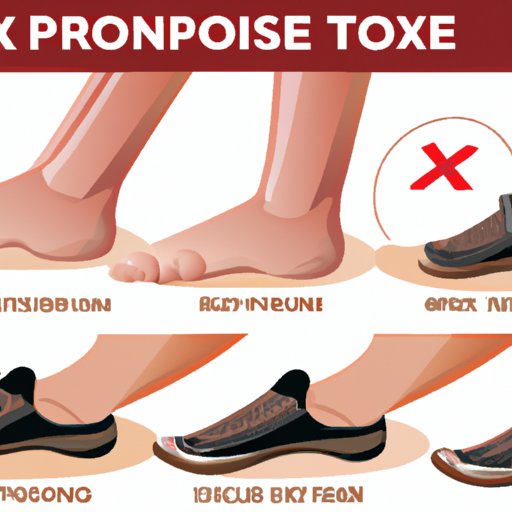Why Do Kids Walk on Their Toes: Understanding the Causes, Risks, and Interventions
Toe walking is a common phenomenon in children, with around 5-12% of typically developing kids experiencing it at some point in their early development. For some children, toe walking is temporary and may resolve on its own. However, for others, it may be indicative of an underlying developmental or psychological issue that requires further attention. In this article, we will explore the potential causes of toe walking in children, the risks associated with it, and strategies for parents to help their children overcome it.
Overview of Toe Walking
Toe walking, also referred to as equinus gait, is a walking pattern where the individual walks on their toes or ball of their foot without touching their heels to the ground. Toe walking may occur in children as young as 10-18 months old, but it’s most commonly observed in children around the age of 2-4 years old, with boys being more commonly affected than girls.
There are various potential causes of toe walking, including physical factors such as muscle stiffness, leg length discrepancies, or neurological conditions. Psychological factors such as anxiety, sensory processing issues, or attention-deficit/hyperactive disorder (ADHD) may also contribute to toe walking.
The risks associated with toe walking include delayed motor development, muscle tightness, and, in severe cases, ankle contractures. In some instances, toe walking may also cause social and psychological issues, such as teasing, bullying, or difficulty participating in physical activities that require heel-to-toe walking.
Regarding pediatricians’ and parents’ common concerns, many parents may feel concerned that their child’s toe walking is indicative of a serious problem. However, in most cases, it does not signify an underlying medical condition or developmental issue.
Behavioral and Psychological Aspects of Toe Walking
In some instances, toe walking may be a sign of an underlying developmental issue, such as autism spectrum disorder or cerebral palsy, that impacts their ability to coordinate their movements and walk heel-to-toe. However, in other cases, it may be indicative of anxiety or sensory processing difficulties that can make it challenging for children to feel secure putting their heels down to the ground.
One strategy for parents to help their child overcome toe walking is to encourage heel-to-toe walking in a fun and engaging way. Parents can try asking their children to pretend they are walking as different animals or play games like “red light, green light” to encourage heel-to-toe walking. If toe walking persists beyond the age of four or five, it may be time to seek professional help from a pediatrician or physical therapist to rule out any underlying issues that require treatment.
Motor Skill Development and Toe Walking
A physical therapist or occupational therapist may provide insight into how toe walking impacts a child’s physical development. Toe walking may occur because of tight heel cords or weak extensor muscles in the legs. Physical therapy interventions that focus on stretching and strengthening those muscles and reducing tightness may help children overcome their toe walking.
Parents can also help their children overcome any physical limitations that may be contributing to their toe walking. Activities such as stretching, play-based exercises that focus on balance and coordination, and exercises that encourage heel-to-toe walking can be effective interventions.
Personal Anecdotes and Stigma Associated with Toe Walking
Parents of toe-walking children may face judgment and stigma from others who believe that toe walking is a result of poor parenting or a reflection of the child’s character. However, these beliefs are not backed up by science, and parents should reassure their children that their unique characteristics are valued and accepted. Teaching children confidence and self-esteem is essential to help individuals overcome the stigma often associated with toe walking and other unique characteristics.
Interventions and Treatments for Toe Walking
Interventions for toe walking may include physical therapy or surgical intervention, depending on the underlying causes of the condition. In some cases, children may benefit from wearing braces or orthotics that support the ankle and promote proper heel-to-toe walking. In other cases, corrective shoes may be recommended.
However, each intervention has its benefits and risks, and deciding on the most appropriate intervention should depend on the specific child’s underlying conditions and the severity of the toe walking. Parents must understand that treatment may involve multiple healthcare professionals, like occupational therapists, physical therapists, and pediatricians, and it is essential to take a holistic approach and tailor the treatment to each child individually.
Conclusion
In conclusion, understanding the causes, risks, and interventions associated with toe walking is essential for parents with children who display this phenomenon. Toe walking is not always a sign of an underlying medical condition or developmental issue, but it can impact a child’s physical development and progress. Parents can help their children overcome toe walking by supporting and encouraging their child’s unique traits while seeking appropriate professional help if pain or discomfort persists.
